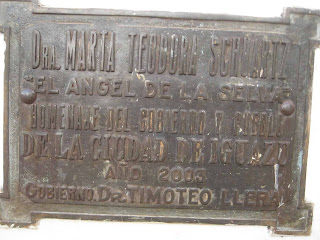[i was starting to. Get the hang of blogging on my iPad but my logitech slim combo keyboard stopped working and the on-screen keyboard just can’t cut it. So things are formatted a bit funny. I can’t see much of the screen. I can’t scroll.]

There were no taxis waiting at the bus stop. Maps.me ( thanks Brock) said it was a 6.2 mile walk. It also said it wasn’t programmed f.or transit here. But then a couple cabs s howed up. Sergio had no idea where it was and called someone while I showed him my phone map. I might be tempted to say it’s in the middle of nowhere, but having lived in rural Thailand, i know that everywhere is somewhere. And that proved true. Though the cab driver was worried about leaving us there until he was sure someone was there to help us. Carlos took us in, and in our limited Spanish and English we communicated.
He asked if we wanted to eat - it was about 2pm - and when we said yes he drove us to a charming little place nearby where a couple of three generation families were having dinner.
It felt so cozy and the food was delicious. And all these people were somebodies living somewhere,
We walked back the long way, well, longer than how we came.
Some pics
Mendoza and San Juan are both on the Eastern edge of The Andes, which tend to block the ocean moisture, hence the desert landscape. We,ve been watching the clouds every day and they’ve tended to stay above the mountains. But they did wander further east the day we took the tour up to the snow.
This morning it was cloudy in Mendoza, but sort of thinned out as we came north. Today at prime eclipse time it was in and out of the clouds, mostly out. Let’s hope that by Tuesday the clouds stay on the Chile side of the Andes.
And the reason we’re out here . . There are very few times that starting a sentence with “the reason . . .” So let’s start it over. We’re way out of town like this because this area is in the path of totality. It will be longer further north.
[And i forgot mention a 4.2 jolt while i was working on the post. No biggie but we did feel it. ]





















































